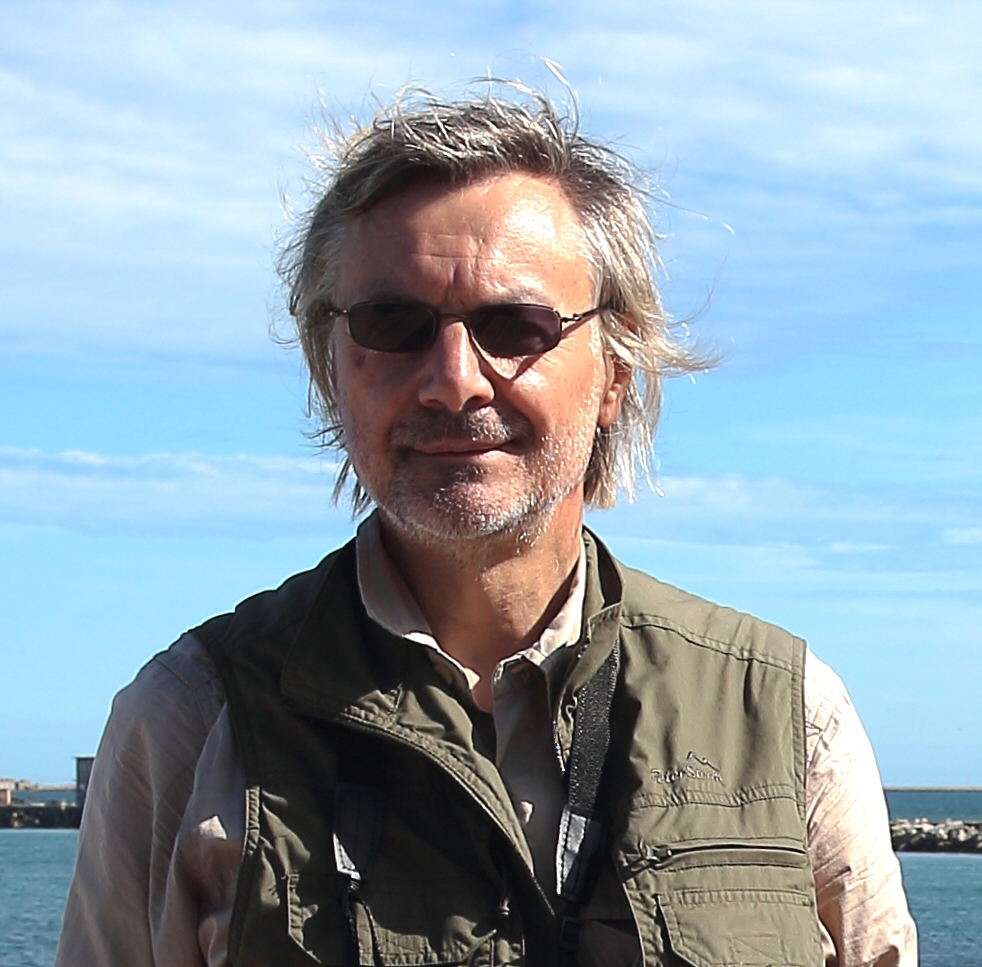Can we stop Earth from heating up?
A high-altitude balloon mission would investigate a controversial way to reduce global temperatures.


This article is brought to you by All About Space.
All About Space magazine takes you on an awe-inspiring journey through our solar system and beyond, from the amazing technology and spacecraft that enables humanity to venture into orbit, to the complexities of space science.
In 2021, Earth reached a bleak milestone: The concentration of carbon dioxide (CO2) in the atmosphere hit 150% of its value in preindustrial times, according to the U.K. Met Office. To prevent the worst effects of climate change, the world needs to decrease net emissions of carbon dioxide to zero by 2050.
But even if we were to achieve this goal, it wouldn't put a sudden brake on the temperature rise, because it takes time to see the effects of CO2 reductions on global temperatures; the negative impacts of global warming will continue for decades. But is there anything else we can do to reduce temperatures more quickly?
A research group at Harvard University thinks it might be possible to achieve a temporary reduction in global temperatures by tweaking the composition of Earth's upper atmosphere. Researchers were hoping to test some of that technology — and the viability of their theory — this summer, in what they call the Stratospheric Controlled Perturbation Experiment (SCoPEx). Although the work has been put on hold, the team is still hoping the experiment will go ahead in the not-too-distant future.
The ultimate source of Earth's heat is the sun, which bathes the daytime side of the planet in a constant flow of infrared radiation. About 30% of this is reflected back into space by the atmosphere, while the rest warms the planet during the day and is radiated back into space at night. In the delicate balance that prevailed in preindustrial times, the incoming heat was exactly offset by the amount lost to space, ensuring average global temperatures remained constant.
The problem today is that CO2 emissions disrupt this balance by absorbing some of the heat that should be radiated back into space, trapping it inside the atmosphere. The more carbon dioxide there is in the atmosphere, the more the temperature rises. In the long term, humans must reduce the amount of carbon dioxide in the atmosphere to prevent the worst effects of climate change. But other processes can produce short-term reductions in global temperature.
Volcanic eruptions, for instance, blast clouds of dust particles high up into the stratosphere, an upper layer of the atmosphere, forming a protective shield that prevents some of the sun's heat from reaching Earth's surface. The 1991 eruption of Mount Pinatubo in the Philippines, for example, caused the average temperature in the Northern Hemisphere to drop by about 1 degree Fahrenheit (more than half a degree Celsius) over the following 15 months. The SCoPEx team wants to take a page from such eruptions by injecting particles into the upper atmosphere in order to lower temperatures.
The basic idea — called stratospheric aerosol injection, or SAI — is simple. A high-flying aircraft or helium balloon would dispense batches of microscopic particles called aerosols into the stratosphere at altitudes of 12.4 miles (20 kilometers) or more — much higher than planes usually fly. The aerosols would remain suspended in the air, too tiny to be visible as clouds from the ground but opaque enough to reflect a fraction of the sun's energy back into space.
Get the Space.com Newsletter
Breaking space news, the latest updates on rocket launches, skywatching events and more!
In simulations, SAI appears to be a viable concept. A2018 Intergovernmental Panel on Climate Change (IPCC) report found that a fleet of high-flying aircraft could deposit sufficient aerosols to offset current levels of global warming. But the aerosols would have to be replenished every few years, and the method tackles only one of the symptoms of climate change rather than addressing its root cause, the greenhouse effect. At best, it's a stopgap measure, countering rising temperatures while countries simultaneously reduce carbon dioxide levels.
So far, the research into SAI has been theoretical, supplemented by a limited amount of real-world data from volcanic eruptions. SCoPEx wants to make real-world measurements under carefully controlled conditions, allowing better calibration of the computer models. "If we are to provide decision-makers with useful information about whether this could work, we need to ground-truth our models," the project's principal investigator, Frank Keutsch, in the Department of Chemistry and Chemical Biology at Harvard University, told the Boston Globe.
Volcanoes mainly eject sulfur-based compounds. But these compounds not only cool the atmosphere but also damage Earth's protective ozone layer, which shields us from harmful UV radiation. So the SCoPEx team is focusing on a less harmful aerosol, calcium carbonate — chalk dust, in other words — which researchers hope will produce the desired cooling effect without harming the ozone layer.
Proposed experiment
The team wants to deploy a large, uncrewed helium balloon that would be similar to a standard weather balloon except that it would be fitted with propellers to allow the team on the ground to maneuver it in a controlled way. With assistance from the Swedish Space Corporation, scientists were planning to launch the balloon near Kiruna, Sweden.
On its first flight, which is tentatively planned for next year, the balloon would not release anything into the stratosphere. Instead, it would ascend to an altitude of 12.4 miles, where the team would test the maneuvering system and check that all the scientific instruments and communications function correctly.
If the test run were to be successful, a second flight would perform a controlled release of 2.2 to 4.4 pounds (1 to 2 kilograms) of calcium carbonate at the same altitude. The balloon would be moving steadily in a straight line during the release, so the aerosol particles would form a narrow plume around 0.6 miles (1 km) in length. The balloon would then turn back through the plume, observing how the particles disperse over time and the extent to which they reflect sunlight, according to the SCoPEx website.
As valuable as the SCoPEx test flight would be for our understanding of SAI, it's important to see the project in perspective. "The goal is not to change the climate or even to see if you can reflect any sunlight," one of the project scientists, David Keith, a professor of Applied Physics at Harvard, previously told HowStuffWorks. "The goal is simply to improve our models of the way aerosols form in the stratosphere."
At least another decade of research will be needed before a large-scale aerosol release, Keith said. The release "might involve injecting around 1.5 million tons [1.4 million metric tons] into the stratosphere per year," he said. "Roughly a hundred aircraft would need to continuously fly payloads up to about 12 miles [20 km] altitude."
The controversy
SAI remains highly controversial, however. One concern is that humans created the climate crisis in the first place by pumping greenhouse gases into the atmosphere, so how can people be sure that pumping aerosols into it will make things better? Although computer modeling suggests SAI is safe, there's still the possibility that it might have unforeseen side effects. There is the possibility that it could disrupt weather patterns, harm crops by reducing the amount of sunlight they receive, and — if sulfide aerosols are used — damage the ozone layer.
Indeed, some scientists are wary of following the SAI route.
"That we might actually try to control the entire climate is a pretty terrifying idea," Douglas MacMartin, a senior research associate and senior lecturer in mechanical and aerospace engineering at Cornell University and a research professor in computing and mathematical sciences at the California Institute of Technology, told Smithsonian magazine. And the IPCC, in a 2018 discussion of what the panel referred to as solar radiation modification (SRM), concluded that "the combined uncertainties, including technological maturity, physical understanding, potential impacts, and challenges of governance, constrain the ability to implement SRM in the near future."
Because of these concerns, the SCoPEx team put off their helium balloon's maiden voyage "until a more thorough societal engagement process can be conducted to address issues related to solar geoengineering research in Sweden."
But Keith argued that the real danger lies in some maverick organizations implementing SAI without the kind of scientific data SCoPEX wants to get. The second big objection to SAI research is that governments and corporations that are already reluctant to reduce carbon dioxide emissions will latch onto SAI as proof that such reductions are unnecessary.
That situation could negate any potential benefits of SAI..Even if the SCoPEx mission is successful and SAI is fully implemented, it will only supplement, not replace, carbon dioxide reduction. Lizzie Burns, managing director of Harvard's Solar Geoengineering Research Program, offered a vivid analogy: "It's like a painkiller. If you need surgery and you take pain medication, it doesn't mean you no longer need surgery.
Join our Space Forums to keep talking space on the latest missions, night sky and more! And if you have a news tip, correction or comment, let us know at: community@space.com.

Andrew May holds a Ph.D. in astrophysics from Manchester University, U.K. For 30 years, he worked in the academic, government and private sectors, before becoming a science writer where he has written for Fortean Times, How It Works, All About Space, BBC Science Focus, among others. He has also written a selection of books including Cosmic Impact and Astrobiology: The Search for Life Elsewhere in the Universe, published by Icon Books.










